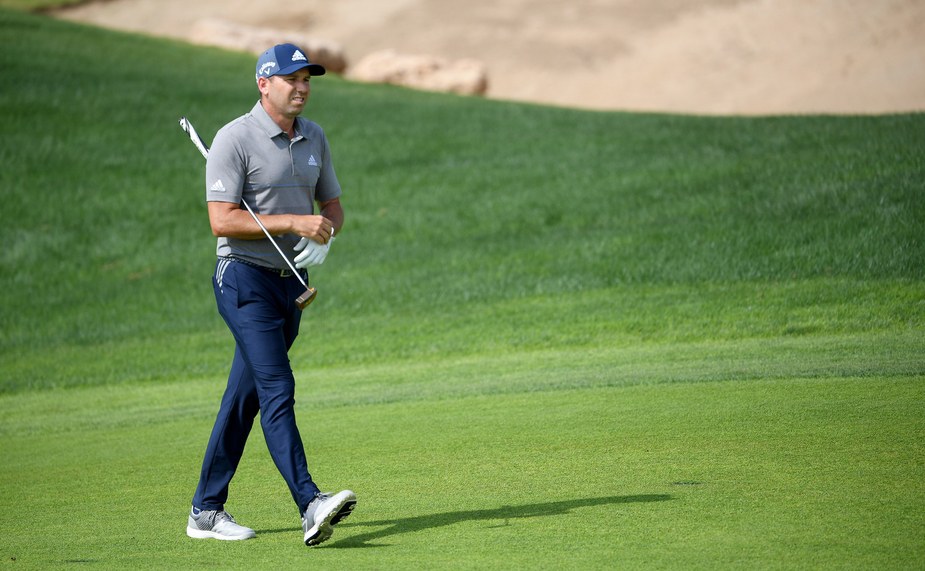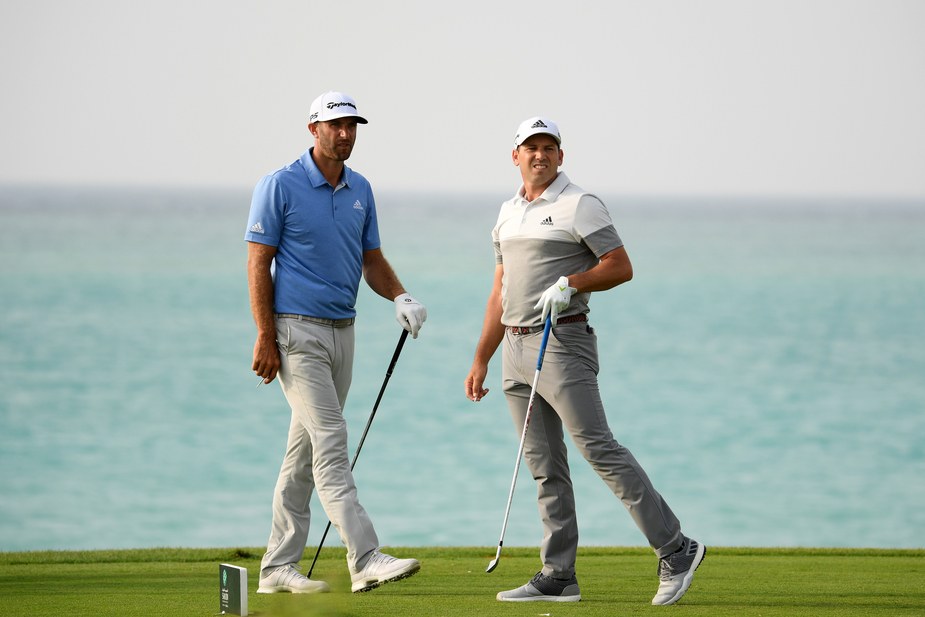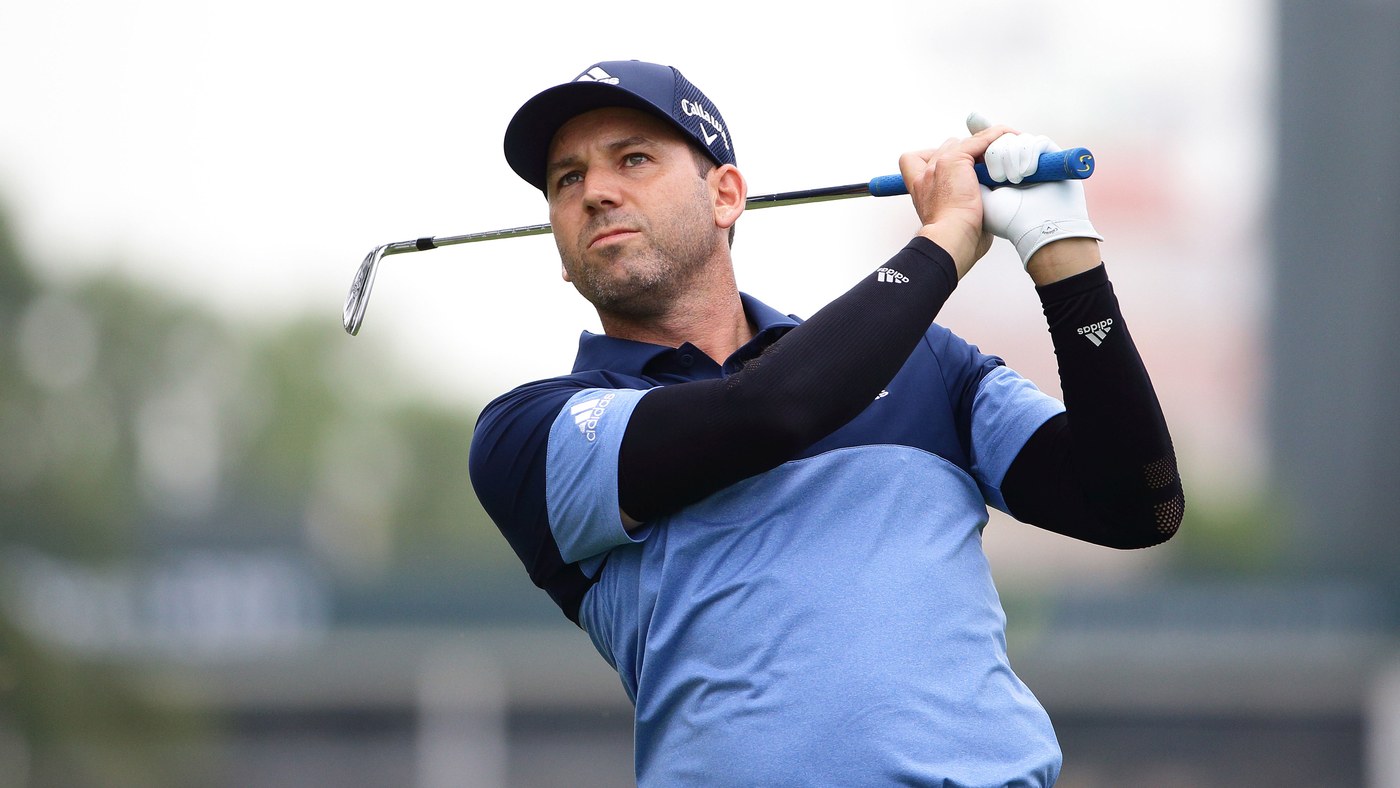By John Feinstein
In April 2002, the University of Maryland won its first national championship in basketball. The coach was Gary Williams, who I had known for more than 20 years—one of the most intense people I’ve met in any sport. As Williams was cutting down the final net in Atlanta, I stood on the court with his daughter, Kristen. Smiling, she said, “Maybe now he can relax a little bit.”
I laughed. “Kristen,” I said. “Have you met your father?”
Achieving a lifetime dream rarely causes a great competitor to relax. Years later, Williams told me winning that title probably made him more intense—if that was possible. “I felt as if I was being watched more closely,” he explained. “When we failed, it wasn’t just Maryland losing. It was the 2002 national champions losing. That made it a bigger deal.”
I thought about Williams this weekend, reading stories about Sergio Garcia’s meltdown in Saudi Arabia. In case you missed it in the midst of all the Super Bowl/Johnny Miller hype, Garcia was disqualified from the European Tour event for apparently damaging several greens, taking out frustration with his play on reportedly at least five putting surfaces.
Tour officials announced Garcia had been DQ’d for “serious misconduct” under new rule 1.2a, which for lack of a better description could be called the “sportsmanship rule.” Among the rules changes that went into effect at the beginning of this year, it may have been the least discussed.
There’s no doubt here about whether Garcia deserved the penalty. He made no attempt to deny his misbehavior and quickly issued an apology for it, saying he had informed other players that “it will never happen again.”

Ross Kinnaird/Getty Images
Garcia in action during Saturday’s third round of the Saudi International. After his round, Garcia would be DQ’d by European Tour officials for purposely damaging the course’s greens.
That Garcia might act hot-headed isn’t new; go to YouTube and you can find clips of him throwing more than a few clubs over the years. But this does appear to have gone to a different level. The question that will be raised is why would he meltdown in such a manner.
My answer: See the Gary Williams quote.
Everyone in golf knows what a fairytale the 2017 Masters was for Garcia. He was 37 and many—including Garcia himself—had doubted whether he would ever win a major. In fact, an oft-heard conversation in media rooms and around bars was this: If Sergio never wins a major, is he a Hall-of-Famer? He had won 22 times worldwide and been one of the all-time great Ryder Cup players. A similar resume had gotten Colin Montgomerie into the Hall. Would it be enough for Garcia?
Garcia ended the debate that year at Augusta, rallying from three strokes down on the back nine on Sunday to catch Justin Rose and then beat him in a playoff. Most of the golf world rejoiced. Rory McIlroy said afterwards he cried when Garcia’s final putt went in the hole—even though Rose, who already had a major title, is a good friend. Congratulations poured in from everywhere.
El Niño was no longer a boy in every sense of the word: He was engaged to be married that summer to Angela Akins, and he would become a father in March 2018. He had his major and could ride off into the sunset, a lock Hall-of-Famer and, clearly, a happy man.
There’s no real pattern to how golfers handle a late-career major victory. Darren Clarke was almost 43 when he won the Open Championship in 2011 and, for all intents and purposes, went on an extended victory tour. Clarke was always a man who liked to have a good time, and after his surprising win at Royal St. George’s, he did just that. He played 20 more majors and missed 12 cuts. His highest finish was a T-21 in 2013, also at the Open Championship.
On the other hand, Tom Kite, one of golf’s all-time grinders, stayed competitive in majors into his 50s after his breakthrough win at age 42 at the 1992 U.S. Open. He had three top-10 finishes in majors in 1994, including a fourth-place finish at the Masters. Three years later, at 47, he again had top-10s in three majors and was second to Tiger Woods at the Masters. If Woods had stayed in college for one more year, Kite might have been the oldest man to ever win a green jacket. Four years later, at 51, he finished T-5 in the U.S. Open.
Garcia finished T-21 and T-37 at the U.S. Open and Open Championship in 2017, still enjoying his victory tour. Then, shortly after his honeymoon with Akins, Garcia missed the cut at the PGA. No big deal, really. That October, he won again, at the Andalucia Valderrama Masters, in front of his adoring Spanish countrymen.
But in 2018, Garcia shot 81-78 as the defending champion at Augusta to miss the cut by 10 strokes—his two days lowlighted by an octuple-bogey 13 at the 15th hole on Thursday when he put five balls into the water. He then missed the cut in the remaining three majors, stretching is string of missed major cuts to five.
Garcia did bounce back in the fall, going 3-1-1 in the Ryder Cup, including a singles victory over Rickie Fowler at Le Golf National. Along the way he passed Nick Faldo as the all-time leader in Ryder Cup points (25½), a milestone that no doubt gave him great pleasure, given his simmering feud (dating to the 2008 Ryder Cup) with Faldo. And he successfully defended his title at Valderrama in October.
Bad news: His post-Masters victory record in the majors. Good news: Two European Tour victories and helping lead Europe at the Ryder Cup—the sixth time in nine appearances he played on the winning side.
If what happened this weekend makes one thing crystal clear, it is that Garcia has not relaxed since his win at Augusta. He’ll be 40 this July, and it’s pretty clear he still burns to play well. He was T-52 after three mostly mediocre rounds in the Middle East when he was disqualified.
Garcia has seen his fair share of controversy during his career. There was his very public battles with Tiger Woods, low-lighted by his foolish “fried chicken” comment in 2013 after their clash at the Players; his less-than-warm relationship with Phil Mickelson, much of it centering on Ryder Cup scuffling; his leave-of-absence from the game in 2010 born of frustration with his game; and his 2012 declaration that he didn’t think he had what it took to win a major.

Ross Kinnaird/Getty images
Garcia was paired with the eventual Saudi champ, Johnson, during the first two rounds of the event.
Through the years, Garcia has occasionally been testy with the media, but most of the time he’s bright, charming and funny—self-deprecating in an endearing way. He burst onto the scene at 19 when he finished second to Woods at the 1999 PGA and has very much had to grow up in the public eye. He’s matured well, even though he can clearly still be hot-tempered.
As Garcia said himself, there’s no excuse for his behavior in Saudi Arabia. The first step towards correcting a mistake is admitting it. Garcia has always been good at that.
In 2002, during the U.S. Open at Bethpage Black, Garcia claimed on Friday afternoon that if Woods had been part of the afternoon wave, the USGA would have stopped play during a downpour he and others—but not Woods—were caught in. The next day, realizing his comments were silly, Garcia left a note in Woods’ locker apologizing. As luck would have it, he played well enough in the third round to be paired with Woods in the final group on Sunday.
When the two men walked onto the first tee, they shook hands for the cameras. Garcia turned and grabbed a handful of tees and offered some to Woods. “Need some?” he asked.
Woods glared at him. “No,” Woods said, turning and walking away. The next time the two men spoke was on the 18th green when Garcia congratulated Woods on his victory.
Garcia may not be universally loved by American Ryder Cuppers, but generally speaking he’s hugely popular in the golf world, his missteps notwithstanding.
He will be forgiven for this, although he will certainly be asked about it in the run-up to the Masters.
He will say—correctly no doubt—that he’s learned a lesson. There’s a lesson in this for the rest of us too: the fire’s still there. If you doubt it, I’d ask you this: Have you met Sergio Garcia?









